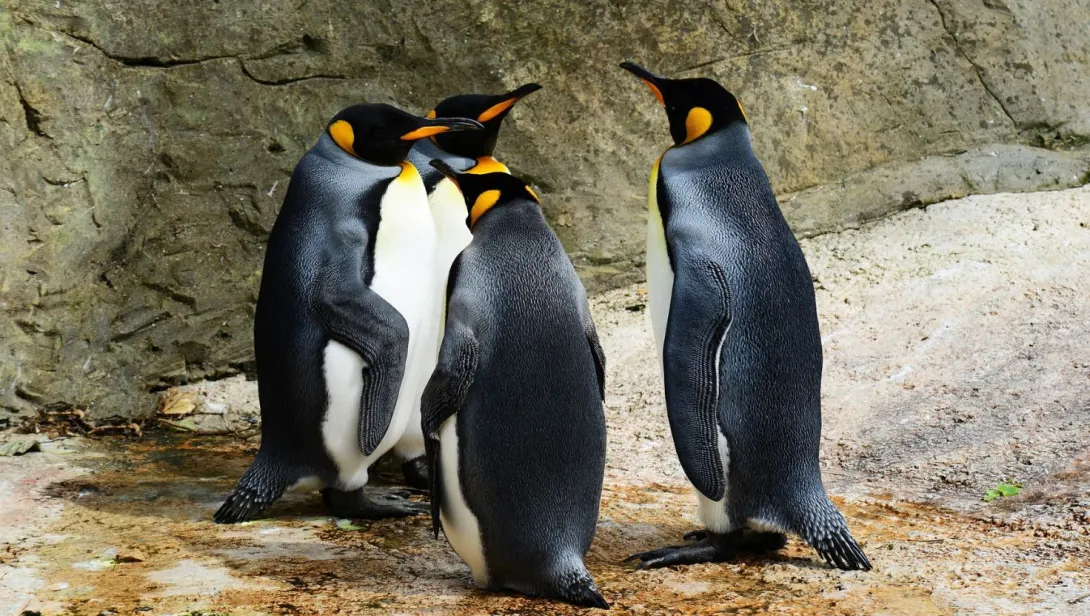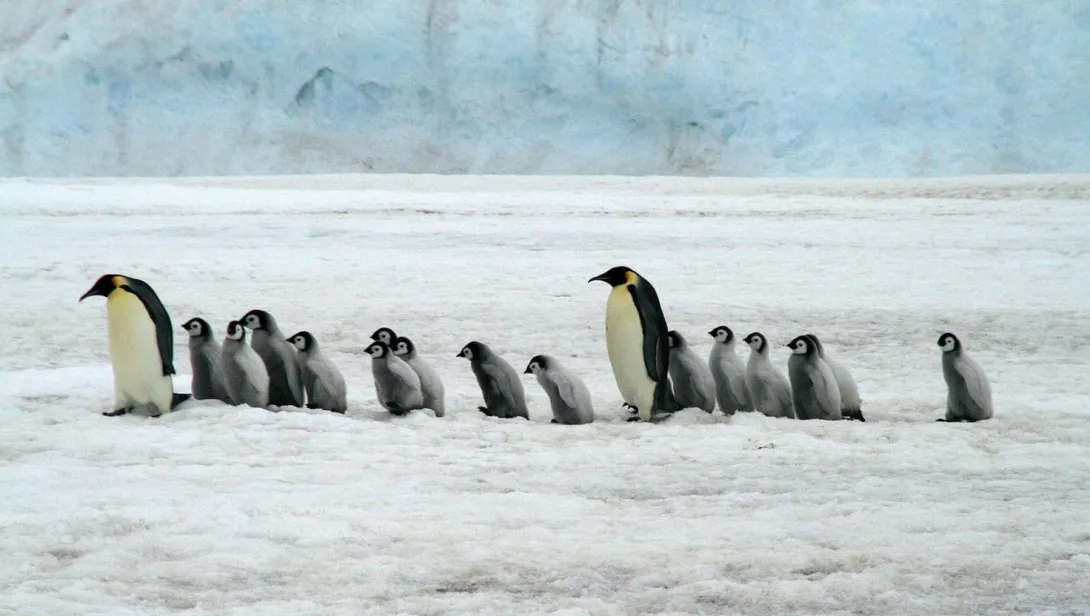Skip to main content
General Information
- Penguins are a group of flightless seabirds adapted to life in the water.
- They are found primarily in the Southern Hemisphere, with one species near the equator.
- There are around 18 recognized species of penguins.
- Penguins are known for their distinctive black and white plumage and upright posture.
- They are excellent swimmers, using their wings as flippers underwater.
Physical Characteristics
- Penguins range in size from the Little Blue Penguin (about 30 cm tall) to the Emperor Penguin (up to 1.2 meters).
- They have streamlined bodies for efficient swimming.
- Dense feathers and a layer of blubber keep them warm in cold environments.
- They have strong, flipper-like wings used for propulsion in water.
- Penguins have webbed feet and a tail that helps with steering underwater.
Habitat and Distribution
- Most species live in cold coastal environments, such as Antarctica.
- Some species inhabit temperate and tropical regions (e.g., Galápagos Penguin).
- Penguins typically breed on islands and remote coasts.
- They rely on the ocean for feeding and spend much of their lives at sea.
Diet and Feeding
- Penguins are carnivores and primarily eat fish, squid, and krill.
- They use their sharp bills to catch slippery prey.
- Penguins can dive deep and hold their breath for several minutes while hunting.
- Some species can dive over 500 meters in search of food.
Reproduction and Lifecycle
- Penguins are typically monogamous during breeding season.
- They often return to the same nesting site each year.
- Both male and female share responsibilities in incubating eggs and raising chicks.
- The Emperor Penguin incubates its egg on the male's feet under a flap of skin.
- Chicks are covered in down and rely on their parents for warmth and food.
Social Behavior
- Penguins are social birds and often form large colonies.
- They communicate using vocalizations and body language.
- They huddle together for warmth and protection from predators and cold.
- Each penguin has a unique call to identify its mate and chicks.
Threats and Conservation
- Major threats include climate change, overfishing, oil spills, and habitat loss.
- Some species are considered vulnerable or endangered.
- Conservation efforts focus on marine protection, climate action, and sustainable fishing.
- Organizations also monitor breeding populations and conduct research.
Interesting Facts
- Penguins can swim at speeds up to 15 km/h (9 mph).
- They can leap out of the water to land on ice or escape predators.
- Penguins molt annually, shedding and regrowing all their feathers.
- Some penguin species travel hundreds of kilometers to find food or reach nesting sites.
- Despite being birds, penguins have lost the ability to fly and evolved to swim instead.

